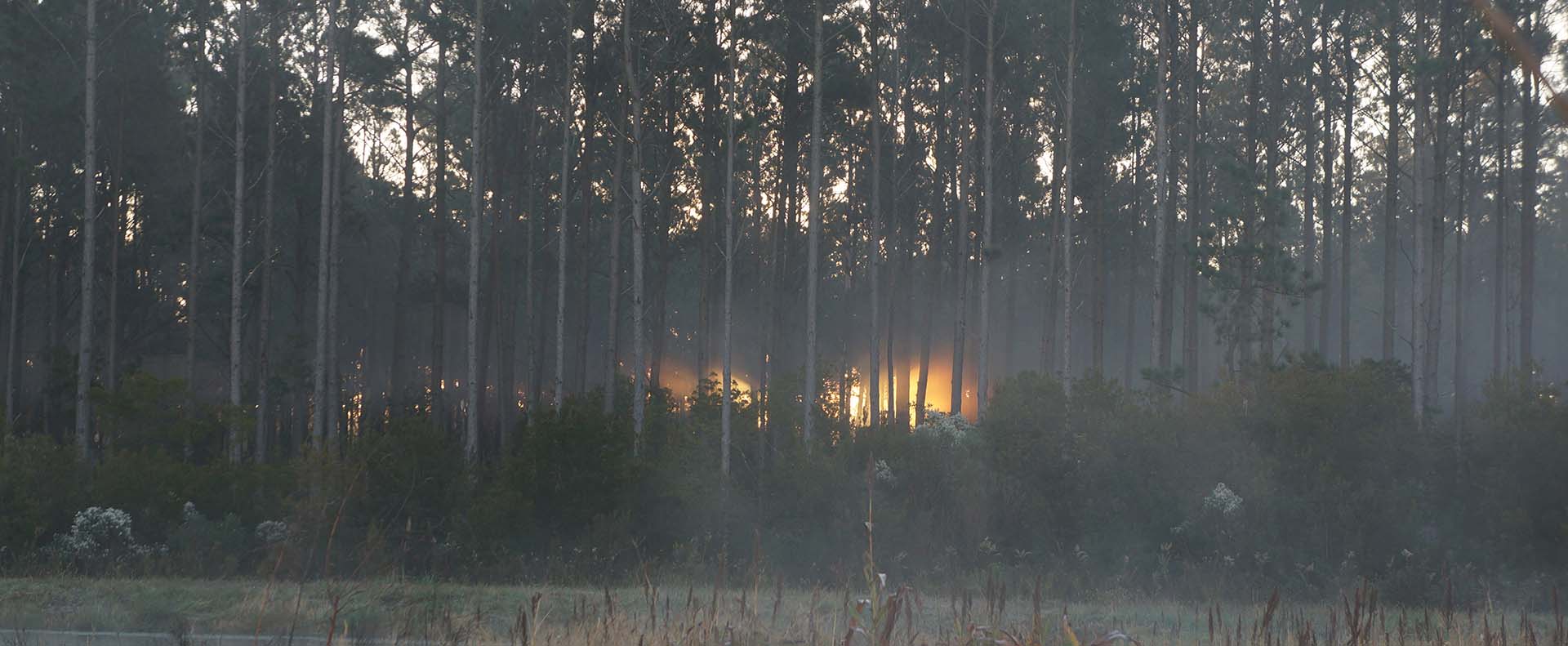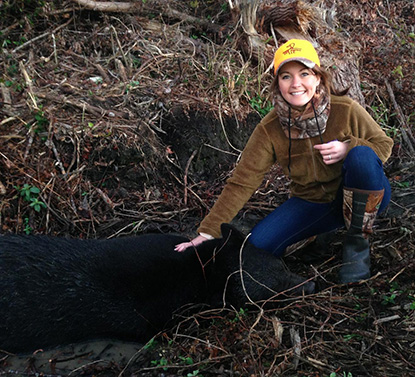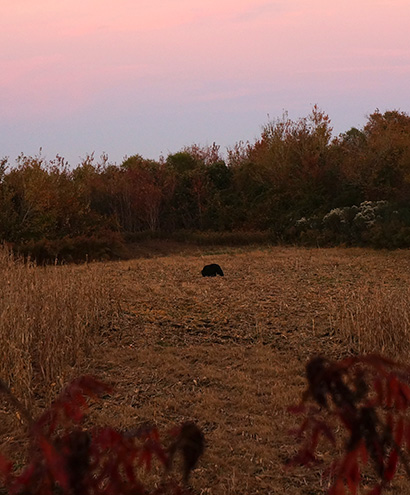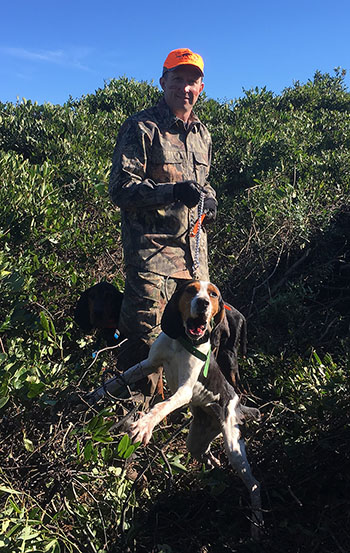To ensure we deliver a world-class bear, we only offer hunts to six hunters a year. To guarantee an exceptional experience we only have three hunters in camp at a time, and only hunt the first week of the first season.
You will rise to a light continental breakfast before heading out to the field. In the field, you will likely be in a tower stand or ground blind. We like to be settled in our hunting position 30 minutes before legal shooting time, which is 30 minutes before sunrise. You will be accompanied by a guide at all times, while your guide’s job is to make sure you are in position and set up for the shot when the time comes. We try to take all of our shots within 100 yards. Scoped high power rifles such as a 7mm, 300 Winchester Magnum, or higher calibers are preferred for this style of hunting.
In the event the bears do not cooperate on a still hunt, we will call in the houndsmen. Hound hunting is an exciting and challenging method of hunting that will provide you with a story of a lifetime. Here you will need an unscoped rifle such as a 45-70 or a shotgun loaded with slugs, which we can provide. These shots can be up to 50 feet or even as close as point-blank.
Hunters are expected to arrive at camp fully licensed and prepared for the hunt, we’ll take care of the rest!







